
Marine Life Around Coral Reefs Portrayed by Toby Matthews
Healthy coral reefs provide the essentials for dynamic marine life along coastlines in many regions around the world. Biologically diverse coral reefs also support fishing and tourism, which have been beneficial to many local communities. However, an unfortunate global bleaching event in 2014-16 devastated corals worldwide (as much as 50% of the coral reefs in Hawaii were affected). This event was caused by global warming, and its effects were exacerbated by land-use changes, overfishing, and coral disease.
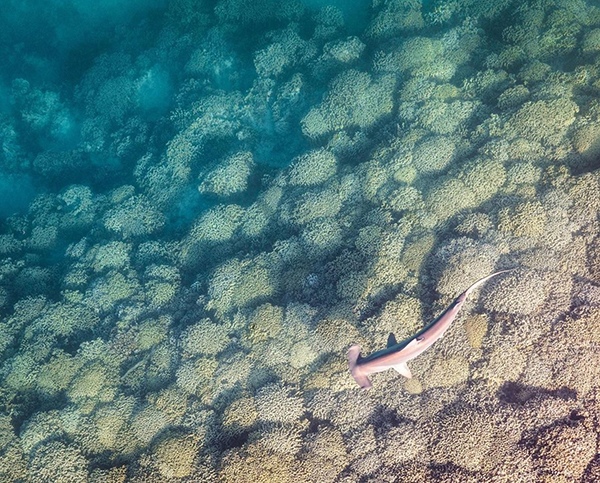
Toby Matthews, a marine biology Ph.D. student at the University of Hawaii, has dedicated himself to protecting the coral reefs by finding solutions to the sustainability of coral reef fisheries and works part-time at the National Oceanographic and Atmospheric Administration (NOAA). Outside of his work, Toby has documented many amazing images of the ocean and its inhabitants. With his recent usage of drones, Toby has been able to showcase marine life from high altitudes, giving viewers a new perspective and appreciation of the beauty along shallow coastlines.
In the following interview, Toby shares with us some of his stories and images of the marine life found around Hawaii as well as his concerns regarding the ocean environment in general.
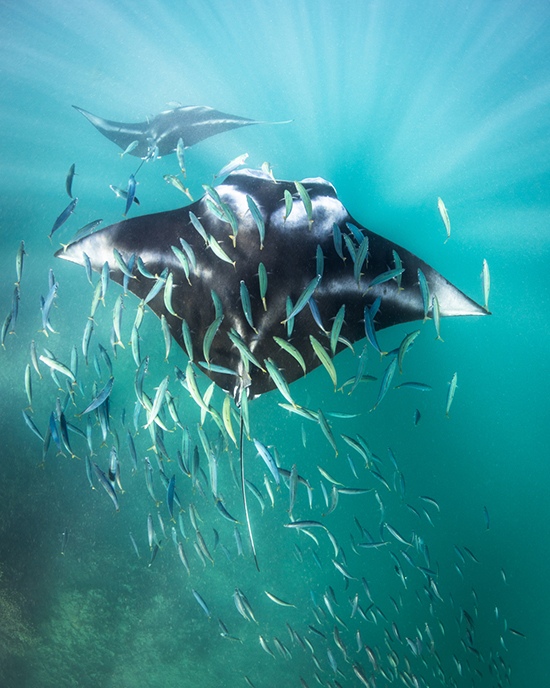
Q: Please share with us the path that took you to ocean photography.
A: I’ve always loved the ocean. In 2012 I moved to Hawaii and quickly started my journey as a photographer to capture the amazing scenes I encountered. Unfortunately, I started running out of new landscapes to photograph within a few years. Marine wildlife is much more unpredictable, and in a way, that annoying unpredictability has fortunately kept me occupied for the last decade.
Q: In which region do you focus on when taking images of the ocean? What are the characteristics of that region that are important to you?
A: I spend most of my time at Kaneohe Bay, a murky but wildlife-filled area about 20 minutes from my home. I’ve spent many years learning the intricacies of this bay, and a mental bank of images I still hope to capture keeps me coming back. The difficulties of photographing here actually appeal to me, as I’m able to capture unique images that many people don’t believe are possible here. However, Hawaii is blessed with an abundance of beautiful underwater landscapes and marine life, so there’s really no shortage of regions for me to expl
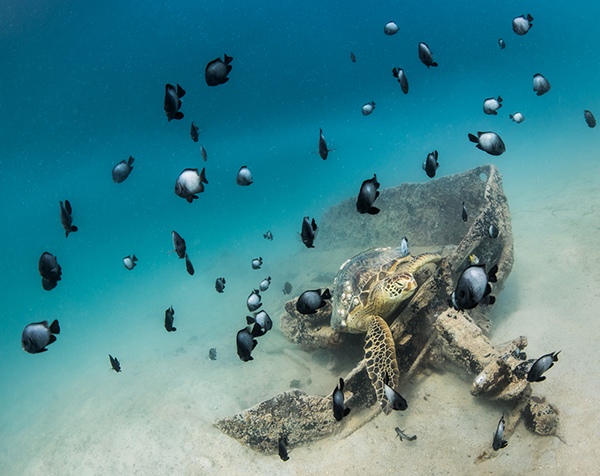
Q: How do you perform your ocean photography and what type of features, such as ocean formation or fish, appeal to you?
A: My favorite scenes include marine wildlife portrayed within their environment. The ocean is a vast space composed largely of nondescript open water, so to get a compelling photo you need to pay equal attention to the wildlife and the area in which you encounter it. For underwater photos, I’ll often explore areas with interesting rock or coral structures or schools of fish to serve as a backdrop, while for drone photos I’ll fly along with coral reef drops and nicely rippled sand patches. In both cases, from my photographic perspective, there’s little value in finding interesting wildlife unless I find it within an appealing habitat, so I might as well begin searching in interesting areas.
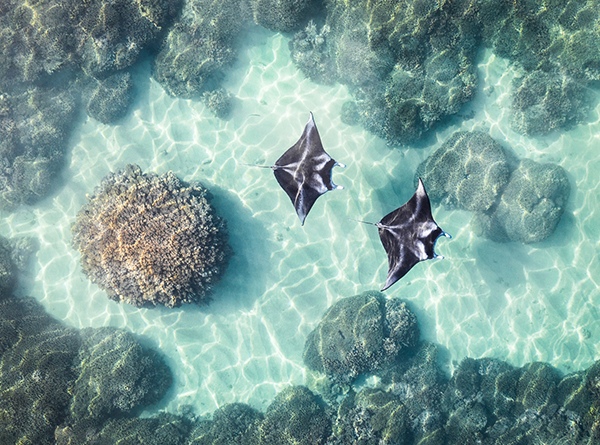
Q: You are currently studying for a Ph.D. in marine biology. How does your study help in your ocean photography?
A: My research focuses on low-cost methods to assess the sustainability of coral reef fisheries, which doesn’t lend much direct help to my photography. However, my background in marine biology and the scientific approach have both helped with finding and approaching wildlife. I put huge amounts of time into understanding the conditions under which I’m most likely to find my target wildlife, and keep track of the location and conditions under which I’ve spotted wildlife in the past. For example, I’ve found that manta rays are most likely to be found feeding just off coral reef ledges on a rising tide. It seems that the rising tide pushes up plankton-rich water along the reef ledges, which attracts the mantas. Information like this has helped me to put myself in the best positions at the best times to capture elusive photographs.
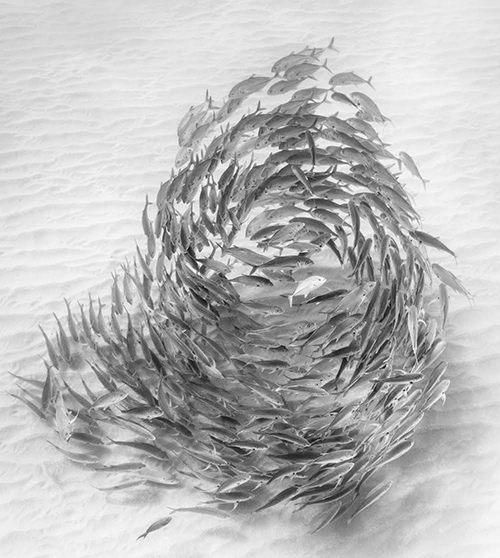
Q: You are also working part-time at the National Oceanic and Atmospheric Administration. Please tell us what this agency is about and your role in it.
A: The National Oceanographic and Atmospheric Administration (NOAA) is an agency within the United States government that is best known for producing our weather forecasts, but is actually responsible for a wide variety of missions, including managing our marine resources. Specifically, I perform analyses to determine sustainable catch limits for fisheries across Hawaii and Guam. I appreciate the value of my role, as I recognize that our growing human population needs to extract food resources from the ocean, but that this shouldn’t be done at the long-term expense of our ocean ecosystems.
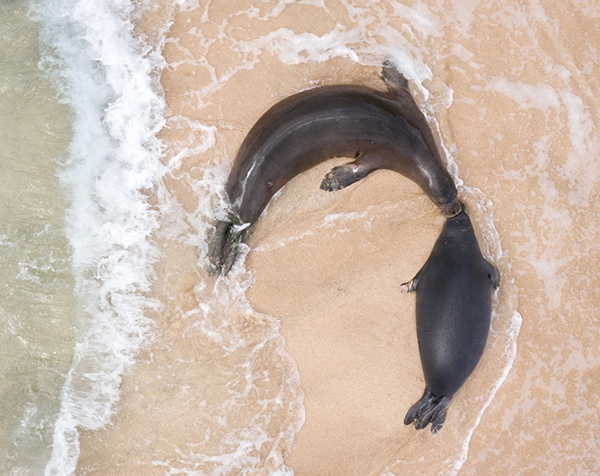
Q: How is ocean photography different from land photography? What equipment do you use in taking ocean photography?
A: Color is a whole different beast in underwater photography as compared to above-water photography. The water column absorbs each color differently, so as a photographer you need to take extra steps to ensure that you get true, pleasing colors. For example, reds are gone within 30’ of the surface, and are noticeably desaturated even at 10’. To combat this, you can either use a red filter to bring the colors back to their usual proportions (though this only works within shallow depths) or use external light sources (though you then can run into issues with unpleasing mixed light sources of unequal temperature). This results in me diving with a large, aluminum-housed camera with all sorts of lights and accessories attached to it.
Recently, improvements in consumer drones have allowed me to take “underwater” photos without even getting in the water! This only works with a very calm water surface and marine life that is close to the surface, but drones have played an increasing role in my photography over the last five years. It’s amazing to be able to scan miles of ocean for photographic subjects in minutes, which would otherwise be unthinkable with a snorkel and fins.
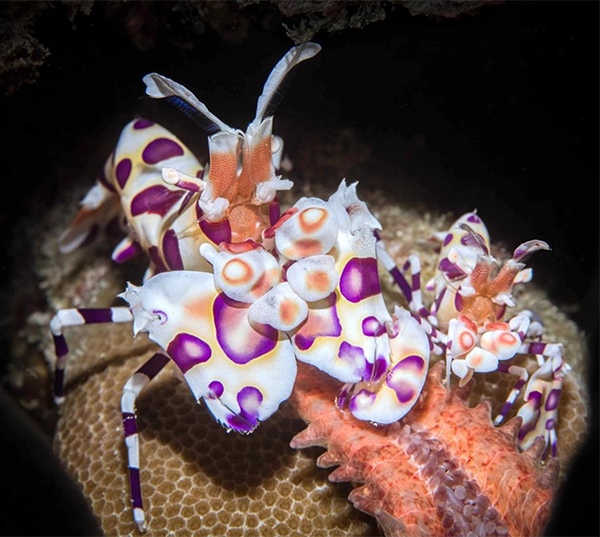
Q: Do you have any concerns about our current oceanic environment?
A: Humans are negatively impacting the oceans at many different scales. At the local level, overfishing and runoff are big issues. Overfishing can do more than just deplete the fish we enjoy eating, as marine ecosystems are highly interrelated and can collapse when certain members are overfished. Increased runoff results from impervious surfaces that we build and destroys nearby coral reefs, and excess nutrients or chemicals from runoff can lead to large-scale die-offs. At a higher level, global warming and its secondary effects are clearly the dominant concern. Warmer oceans restrict habitats for cold-dwelling species, while in warmer waters the higher concentration of carbon dioxide in the ocean makes it near impossible for corals and shelled organisms to deposit their calcium carbonate skeletons.
Q: Do you have any future projects/plans that you would like to share with our readers?
A: At this time I am purely an amateur photographer, and simply enjoy sharing my photos with a small audience on my Instagram page. My girlfriend and I are beginning a venture into underwater videography, so stay tuned on that page if you are interested in updates!
Toby’s Instagram
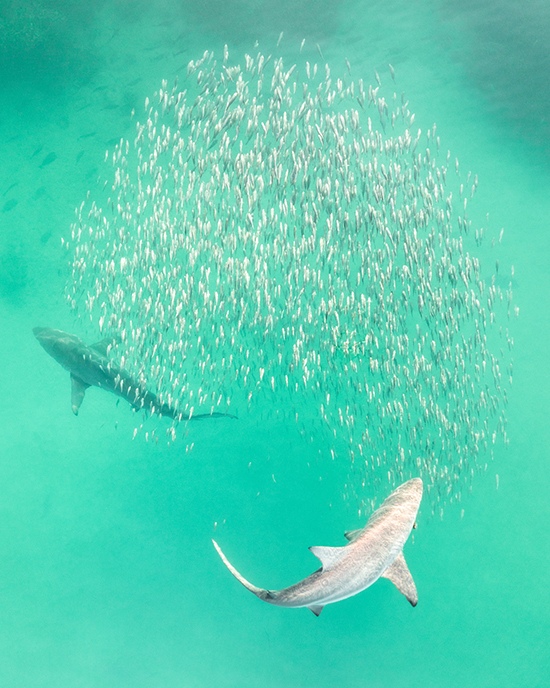
We thank Toby for sharing his knowledge and photos about the marine life surrounding these beautiful islands of Hawaii. Hopefully, he could find solutions to sustain the fisheries surrounding the coral reefs.